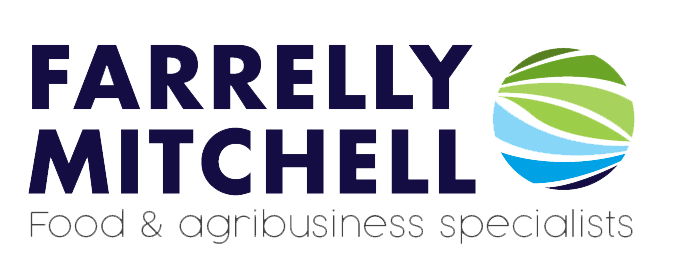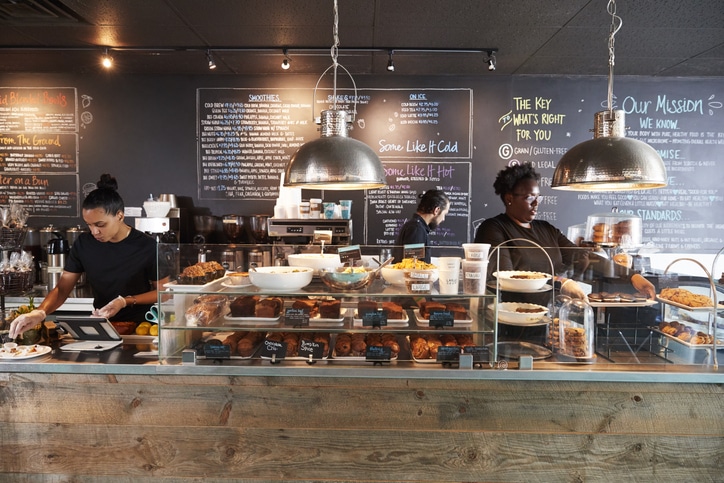Coffee has proven to be a particularly resilient industry, rebounding from price crises, extreme weather events, and even global pandemics. Despite these hardships it remains one of the world’s most consumed and traded commodities, with a complex, highly interconnected, and geographically dispersed supply chain to match. The coffee supply chain supports an estimated 100 million coffee farmers worldwide, and a further 25 million are employed in processing, trading, transportation, roasting, and retail activities.
From the farm to the cup, the coffee value chain comprises of several distinct stages, namely: cultivation, harvesting, processing, drying, milling, roasting, retail and consumption. In this article, we discuss how each stage comes with its own unique challenges and how consumer demand and market factors are shaping them.
Cultivation
Consumer preferences significantly influence coffee cultivation. Growing demand for specialty coffees, the use of organic beans, and unique origin flavours has encouraged farmers to adopt specific varieties and cultivation methods.
While this shift caters to market preferences, it also introduces several challenges. Specialty coffee often requires more labour-intensive practices and higher production costs, which can prove challenging, especially for smallholder farmers, who often cannot achieve the economies of scale required to justify the investment.
For coffee growers, new crops, especially perennials, are inherently more risky than existing ones. Uncertainties around additional labour requirements, agri inputs, and susceptibility to pests and disease can add unwanted complexity and risk to the cultivation process, not to mention the opportunity cost and time investment coffee demands before bearing fruit . Ensuring adequate training and resources is paramount.
Some governments, NGOs, and private companies have taken up this mantle by providing financial support and technical assistance. Innovations in plant science are also playing their part delivering new varieties of coffee plants that are more robust and alleviate production uncertainties for farmers. For instance, in Uganda agricultural scientists are developing drought-tolerant Robusta coffee varieties to help farmers adapt to changing climate conditions.
Harvesting
Rising demand for premium coffees is also impacting harvesting methods as this trend encourages farmers to focus on quality over quantity, adopting harvesting techniques that enhance the flavour profile of the beans. For instance, in premium coffee producing regions such as Ethiopia and Colombia, harvesting is typically done by hand through multiple passes on each tree to ensure optimal ripeness. When prices rise or when buyers pay premiums for quality, farmers can justify selectively picking only the most ripe cherries, which yields better quality beans.
However coffee prices frequently follow a “boom and bust” cycle, with prices on global markets swinging widely due to weather events, crop diseases, market speculation and changing consumer preferences. This inherent volatility can discourage long-term planning, as prices will inevitably fall and so while the demand for premium coffees incentivises more careful and selective harvesting methods when prices are high, farmers may revert to less selective practices when prices are low.
It is also worth noting that in many countries, harvesting relies on seasonal, often migrant labour. When coffee prices are low, farmers may struggle to afford enough pickers or may limit harvest rounds, potentially compromising on quality. Worse still, lower prices may result in labour exploitation, which can also lead to more problems further down the supply chain.
Processing (Post-harvest processing)
There are two primary processing methods that are commonly used. Washed (wet) processing, which uses water to ferment and wash off the fruit pulp, and the natural (dry) process, whereby cherries are dried whole before removal. A hybrid method, honey (semi-washed) processing, has also gained popularity.
The choice of processing impacts the coffee’s flavour profile. For example, washed coffees tend to have cleaner taste and brighter acidity, while natural process coffees often have fruitier, heavier-bodied flavours. In specialty coffee circles, naturally processed coffees and more experimental methods such as anaerobic fermentation have become increasingly popular due to their unique flavour characteristics. This trend has prompted many producers to adopt these techniques in order to meet demand.
Cost considerations also play a role in processing decisions. Washed processing generally requires more infrastructure (pulping machines, fermentation tanks, abundant clean water) and can be costly, whereas natural processing is simpler and cheaper but can lead to inconsistent or poor quality results. When profit margins are thin, farmers and mills might lean toward less resource-intensive methods to cut costs. Conversely, demand for certain types of processed coffee can encourage investment in processing equipment.
Drying
Consumer preferences significantly influence the coffee drying process, as the methods employed directly affect the flavour, aroma, and overall quality of the final product. Coffee producers targeting premium markets will typically invest in drying methods that enhance flavour and maintain bean quality, while those serving mass markets are more likely to prioritise efficiency and cost-effectiveness.
In specialty coffee markets, consumers often favour beans that have undergone slow, gentle drying, believing that this enhances the flavour stability and complexity of the coffee. To cater to these preferences, premium coffee producers may use raised mesh beds or solar dryers, which promote uniform drying and reduce the risk of taints. Some producers are also exploring advanced drying technologies, such as vacuum freeze drying, which, despite higher operational costs, can retain the appearance, bioactive components, and antioxidant capacities of coffee beans more effectively than traditional methods.
Conversely, for coffee destined for instant products or mass commercial blends, producers may opt for faster drying methods like the mechanical drying processes that are common in regions like Brazil and Vietnam. These propane or wood-fired systems can quickly dry coffee even during wet conditions, safeguarding harvests from humidity damage.
Milling (Hulling and Grading)
Consumer-driven market trends are driving mills toward more technologically advanced, sustainable, and transparent processing methods. In particular, growing consumer emphasis on quality, sustainability, and traceability is reshaping traditional practices. For instance, increased demand for specialty coffee has prompted mills to adopt meticulous grading and sorting methods. Coffee beans are now commonly sorted not just by size but also by density, colour, and defect rates, often using advanced technology such as optical scanners, and digital imaging systems.
At the same time the growing global market for premium, single-origin coffees has influenced mills to perform micro-lot processing. This typically means handling smaller batches, in order to preserve specific farm-level or region specific characteristics throughout the milling process. This shift demands enhanced operational precision and flexibility, as mills must manage distinct batches and maintain stringent quality controls to avoid cross-contamination between different lots.
Similarly, consumer demand for ethically sourced and environmentally friendly coffees has led many mills to invest in eco-friendly equipment that minimises water usage and reduces waste. While an increased emphasis on ethical sourcing means mills increasingly need robust tracking systems to record and demonstrate compliance with criteria such as Fair Trade, Organic, or Rainforest Alliance standards.
Roasting
Coffee roasting is significantly influenced by consumer preferences and market trends. Increasing demand for lighter, brighter coffee flavours in North America and Northern Europe has led roasters to shorten roast times and use gentler, convection-driven heat to draw out distinctive regional flavours. While the growing ready-to-drink (RTD) coffee segment has had the opposite effect, with darker roast profiles being preferred to ensure strong, chocolatey flavours that withstand pasteurisation and cold extraction
Roasters are also diversifying their product ranges by creating multiple versions of the same coffee, each roasted differently to optimise performance for specific brewing methods – such as filter, espresso, and omni-roasts. At the same time the increasing popularity of home brewing and subscription-based coffee models has driven roasters toward packaging smaller, roast-to-order batches.
Health concerns around compounds like acrylamide are also having an impact on roasting practices with many leading roasters carefully adjusting roast levels to minimise harmful compounds and appeal to health-conscious buyers. While at a broader level heightened interest in sustainability and traceability is prompting roasters to invest in electric or low-emission roasting equipment.
Retail and consumption impact on the coffee value chain
The retail sector is both the final, and primary, interface between the coffee industry and end consumers. It acts as a conduit for communicating market trends and translating consumer preferences into upstream market signals. For instance, increasing consumer demands for convenience has compelled supermarkets to produce more ready-to-drink coffee offerings, which in turn required roasters to develop formulations that better maintain flavour integrity even after pasteurisation, and despite extended shelf-life requirements. Similarly, specialty retailers have brought mainstream awareness to single-origin varieties and alternative processing methods, influencing farming practices and sourcing relationships throughout the supply chain.
The advent of online selling platforms (direct-to-consumer models) has also altered how coffee companies interact with consumers. By receiving more direct feedback from customers, businesses can adapt and innovate more quickly. For coffee producers and businesses, understanding and responding to consumer and market trends will be critical to their success, whether that involves striking the right balance between convenience and quality, adopting sustainable practices or leveraging digital technology to better connect with customers.
Moreover, changing consumption patterns and supply volatility have prompted the coffee industry to adjust its distribution logistics, including shipping routes, warehousing strategies, and the use of regional hubs. One major shift has been the geographic rebalancing of distribution to serve growth markets. Shipping routes that once predominantly ran from producing countries to Europe or the US now connect producers directly with Asia and other emerging regions. This is exemplified by Latin American exporters and trade houses reducing their reliance on re-exports via Europe by sending more containers of green coffee to Chinese ports and Gulf states.
Catering to shifting global demographics will be essential for capturing growth and staying competitive. In Western markets, consumption has been stable, but globally, coffee consumption has seen a surging demand in emerging markets such as China, Indonesia, India, Turkey, and many sub-Saharan African countries. In China alone, coffee consumption has been rising at around 30% annually in recent years. This kind of growth has resulted in millions of new coffee drinkers every year, seeking new varieties and blends. This growing and increasingly diverse customer base will significantly impact the industry upstream, as sourcing, cultivating, process and roasting techniques continue to evolve with societal and regional demands.
Outlook on the coffee value chain
Consumer preferences and market trends are fundamentally reshaping the entire coffee value chain, prompting adaptation at every stage. The drive for higher quality, sustainability, and traceability is steering cultivation and harvesting practices toward more selective, resource-intensive methods while post-harvest activities are becoming more sophisticated and technology-driven.
Target markets are diversifying and distribution logistics are evolving rapidly, redirecting global coffee flows and requiring more agile and regionally responsive supply networks.
Looking forward, the coffee industry’s resilience and adaptability will continue to be tested as consumer expectations evolve and each stage will likely be faced with its own unique pressures in the years to come. Ultimately, the businesses and regions best able to anticipate and respond to these consumer and market-driven shifts will be positioned for sustained success.
At Farrelly Mitchell our food and beverage consultants support those in the coffee industry by providing strategic insights, market intelligence, and tailored solutions. While our local knowledge ensures insights and strategies are culturally relevant and practically applicable. Our expertise in operations, processing, manufacturing, sales, distribution, policy, regulation and supply chain optimisation can help coffee industry stakeholders stay ahead of market trends and demands. To learn more contact our team today.














